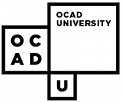Abstract
Purpose: The purpose of this paper is to chronicle new user experience (UX) design approaches being pioneered in an international, multi-institution, multi-sector, cross-project initiative called the Fluid Project, covering the strengths and shortcomings of these approaches and the lessons learned about design and development in distributed communities.
Design/methodology/approach: Open source and community source software development projects have not fulfilled their promise of innovation and natively optimized tools and applications in large part due to a lack of integrated UX design and development processes. Fluid has developed a UX approach that aims to address the need to accommodate the huge diversity of users and contexts in academic communities as well as the critical need to improve the user experience.
Findings: It has been found that the Fluid approach challenges common or traditional notions integral to teaching in higher education, software design, user interaction design methods, usability research and accessibility strategies. It proposes greater individual control over the UX than most users may be ready to assume despite obvious benefits. An unexpected UX challenge is creating tools and applications that prompt and support users in configuring their systems to their personal needs and contexts.
Originality/value: Fluid has designed and prototyped new UX design methods, pedagogical practices, and usability and accessibility approaches to suit the context of distributed academic communities and open source development, while at the same time producing a UX system of benefit to the mashup or integration of any set of disparate tools.
Publication Date: 2009
Publisher: Emerald Group Publishing Limited

